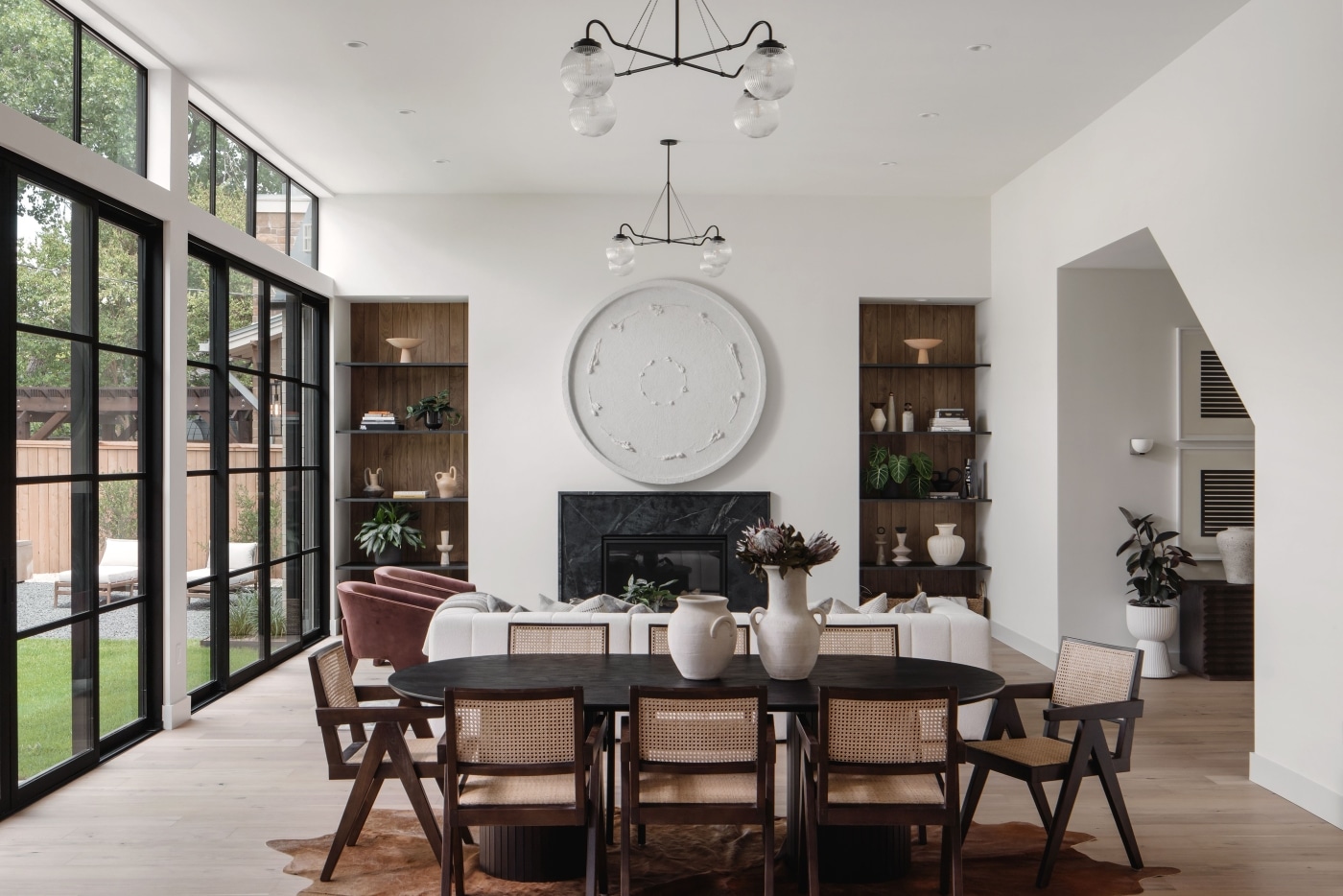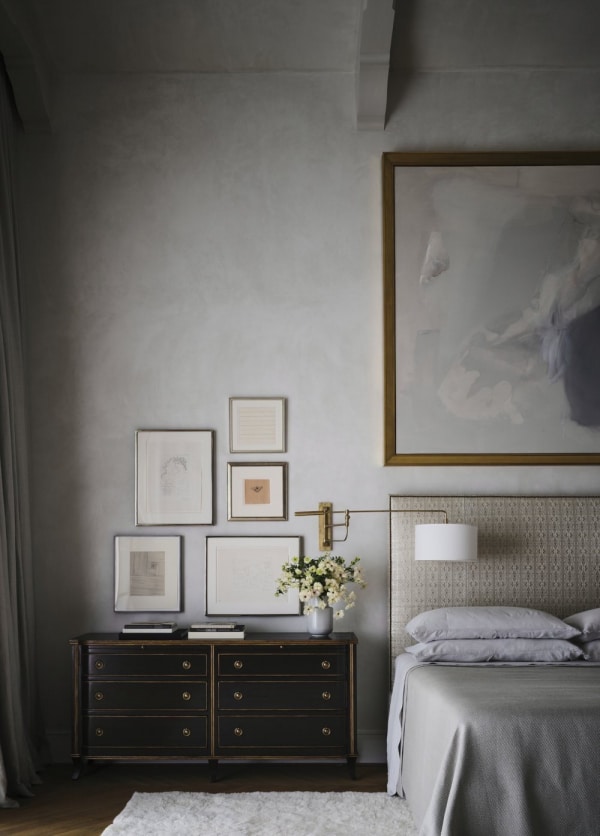Choosing the artwork for your space in relation to furniture, layout, and more.
When it comes to transforming a room with art, it’s not just about finding a piece you personally connect with; it’s also about ensuring it’s the right size. While we have some guidelines, we also enjoy thoughtfully bending (or even breaking) the rules from time to time to create the perfect space.
Setting the Direction
We start by considering the overall scope and scale of the room. Is there a soaring ceiling that needs a low, horizontal artwork or a series of smaller pieces to make it feel cozier? Or does it need a large, bold statement piece to liven things up? Determine the direction you want to take the room in, and then set your sizing parameters.
Consider various spatial aspects, like furniture size, placement, lighting, ceiling height, and even the dimensions of windows and doors, as these play pivotal roles in determining the ideal artwork size.
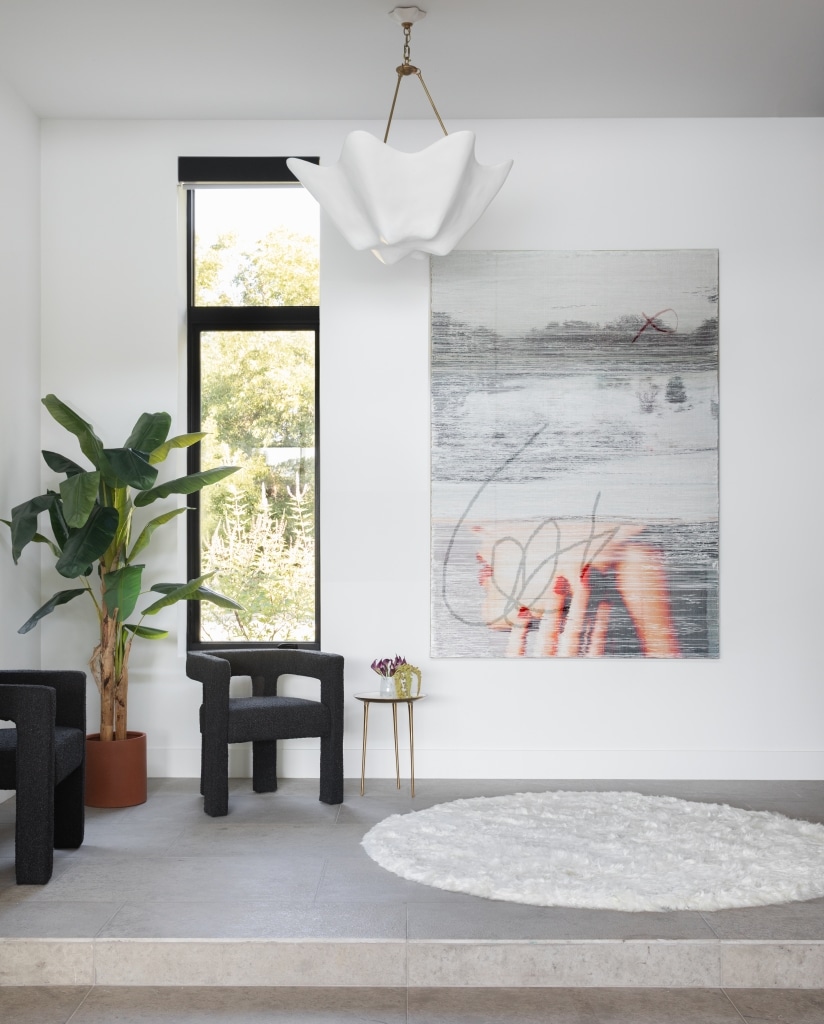
Rules of Thumb (and when we break them)
Height
When we’re installing artwork for ceilings under 12 feet, we use the standard gallery height of 58 inches from the ground to the artwork’s center. For taller ceilings, we’ll use a slightly elevated placement, around 60 inches. We take architectural lines like the tops of door frames or windows into account, too. They typically determine where not to exceed, especially in spaces with angled or lofty ceilings.
Furniture and TVs
Above furniture: We typically recommend maintaining 8 to 12 inches between the top of furniture and the artwork’s bottom. 3-dimensional artwork may vary as we’ll always ensure it doesn’t interfere with your space while you’re seated.
TV considerations: Avoid square-shaped art next to the TV to prevent visual competition. Our recommendation is to explore the walls behind or adjacent to complement the space.
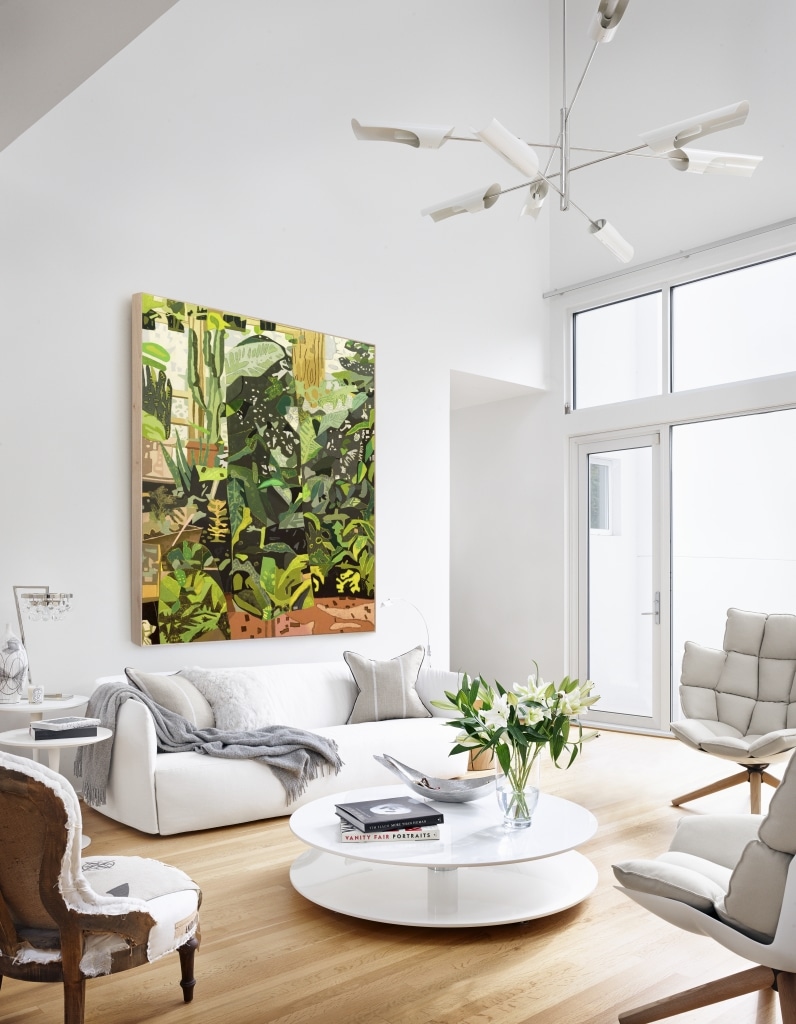
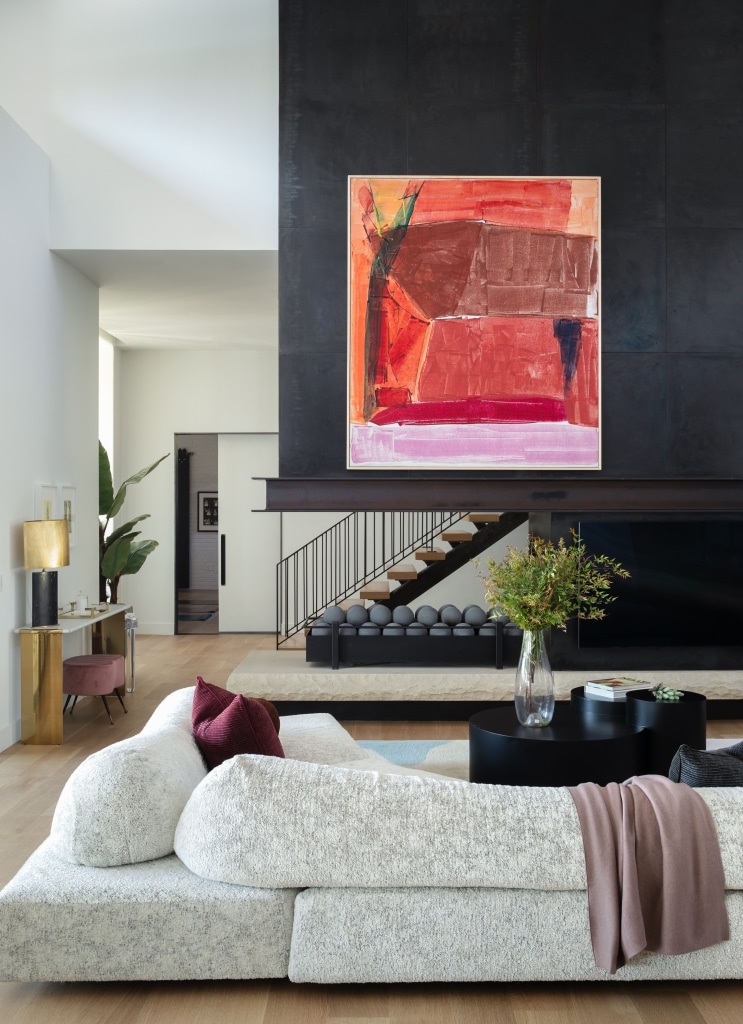
White Space
There can be too much art in one space, so resist the urge to cover every wall with art. For example, a room with four walls often features one large piece and a complementary medium-sized piece on a different wall.
Also consider the entire seating area and lighting, not just the couch back or wall width, to find the right horizontal placement on the wall.
Ideally, artwork should be three-quarters of the width of your seating area or the back of the sofa. Leave enough white space on either side of the artwork so it doesn’t feel too crowded. Typically, half the width of the artwork distance on either side of the artwork will do.
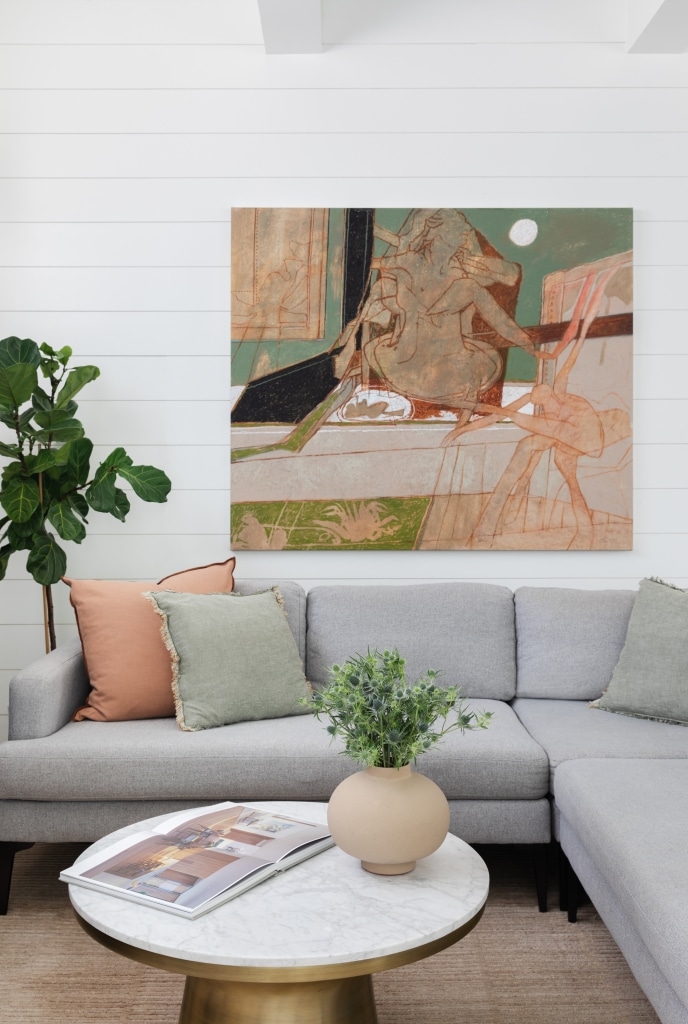
Starting with these rules often helps us figure out a better way to break them. Hanging artwork off-center, over windows, bringing in oversized art, or using three-dimensional non-orthogonal artworks is always a fun way to throw the rules out the window and go with your gut.
The Ultimate Rule?
Each room and person are unique, so our best recommendation is to pick out art that you love, and if that’s true, you’ll always find the right place for it.
Artwork pictured at top of post: Jenn Hassin.



